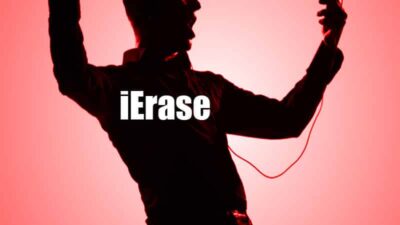From Spotify to Pandora, playing your favorite streaming audio service on your Sonos system is incredibly easy. But what about vinyl records? How can Sonos owners listen to their favorite analog audio formats, and what’s the best Sonos record player setup?
Table of Contents[Hide][Show]
Don’t worry, playing vinyl records via your Sonos speaker system is easier than you might think. Here’s everything you need to know about adding a Sonos record player setup to your Sonos speaker system.
Setting up a turntable with your Sonos system is a straightforward process. Here's what you need to know, so you can get your vinyl record collection playing in no time.... #sonos #vinyljunkie #vinylrecords #vinyl #vinyllove… Share on XHow To Listen To Vinyl Records With Sonos
To listen to vinyl records on your Sonos speaker system, you will need the following items for your Sonos record player setup:
Turntable

- Turntable (preferably with a built-in phono preamp)
If you already have a turntable, then that’s great. You can use your existing turntable and connect it to using select Sonos products. Just make sure that your turntable has a preamp. Most turntables don’t, so you’ll either need to purchase a(Amazon link) preamp (~$15 via Amazon) if you don’t have one, or use the Sonos Amp (see below).
If you plan on using a Sonos speaker with Bluetooth connectivity, then you will need a(Amazon link) record player with Bluetooth ($50+ via Amazon).
And if you are in the market for a new record player, then Sonos recommends the(Amazon link) Pro-Ject T1 turntable ($449 via Amazon). It’s stylish, comes in three different colors, and has a built-in preamp.
Stereo Mini To RCA Y-Audio Cable or 2 RCA Male To 2 RCA Male
A(Amazon link) stereo mini to RCA Y-audio cable is a cheap, but necessary, accessory for your Sonos record player setup if you are using the Sonos Five. It sends the audio from your record player via an RCA cable into the wired stereo mini line-in in your Sonos speaker system.
- Stereo Mini to RCA Y-Audio Cable (~$6 via Amazon)
If you are using the Sonos Amp or Sonos Port, then you will need a(Amazon link) 2 RCA Male to 2 RCA Male cable. You probably already have a few of these cables lying around. If not, you can buy one from Amazon for ~$5.
Any Sonos Product With External Audio Input Capabilities

Finally, you will need a Sonos product that has audio input capabilities. Not all Sonos products have a wired line-in input or Bluetooth connectivity. So you’ll need to use one of the following items: Sonos Roam (~$200), Sonos Move (~$380), Sonos Five ($549), Sonos Amp ($699), or Sonos Port ($449).
- Sonos Roam & Sonos Move: Both the Sonos Roam (~$200) and Sonos Move (~$380) are wireless rechargeable Bluetooth speakers. This is an affordable option if you already have a Bluetooth record player and want speaker portability. You can connect any Bluetooth audio source to the Roam or Move, including your smartphone or a Bluetooth record player. Using Bluetooth, you can then play sound from your Bluetooth record player to the Sonos Roam or Sonos Move speakers. You can even group multiple portable Sonos speakers to create a multi-room experience. There are a few drawbacks to consider, such as reduced sound quality and the inclusion of extra points of connectivity friction. Before playing an album on the Sonos Roam or Sonos Move, make sure to manage your audio sources in the Sonos app and check your Bluetooth connections.
- Sonos Five: The Sonos Five ($549) has a direct audio input, allowing you to connect a wired audio source, like a turntable. Even better, the wired audio sent into your Sonos Five speaker can be sent to the other Sonos speakers on your system. That means that you can play a vinyl record and send the audio to every Sonos speaker at the same time.
- Sonos Amp: If you already have a significant investment in passive speakers, like outdoor speakers, then the Sonos Amp ($699) is probably for you. The Amp allows you to connect non-Sonos wired speakers, power them, and add a wired input source to your Sonos system. Any audio source added to Amp can then be distributed to the rest of the Sonos speakers on your system.
- Sonos Port: If you already have enough Sonos speakers in your system, and only want an audio input gateway, then the Sonos Port ($449) is probably your best option. Just take the output of your entertainment system and add it to the Sonos Port input to send audio to your entire Sonos system.
Why The Sonos Five Speaker Is Our Recommended Sonos Record Player Option
With so many different Sonos products to choose from, it can be a hard decision for the average user. Here’s why we specifically recommend the Sonos Five…
Sound Quality: Bluetooth vs Direct Line-In

Do you use your phone to listen to music in your car? Have you ever tested the difference in audio quality between a Bluetooth and a wired connection between your phone to your car stereo? The Bluetooth connection is wimpy. What should be a big wall of sound, is just a narrow column.
Your Sonos speaker system does an incredible job at producing a rich and full sound. But that sound is only as good as its source. And sending audio from your record player to your Sonos speakers using Bluetooth sucks. If you want that warm vinyl sound on your home stereo system, then don’t dull it with a Bluetooth connection.
Despite being cheaper, the Sonos Roam and Sonos Move don’t offer the same superior sound quality as connecting directly to the Sonos Five. You just can’t beat the audio quality of a wired connection!
The Sonos Five has a direct 3.5 mm input line-in port, enabling you to connect any wired external audio source. This can include a CD player, projector, computer, cassette deck, or other device.
Yes, the Sonos Five is expensive. I agree. I went through the same debate myself. But I ultimately went with the Sonos Five because I wanted a more pristine and warmer sound quality for the playback of my vinyl collection.
If you have the money, the Five will elevate your listening experience with vividly clear and spacious stereo sound. It’s an amazing solution for your Sonos record player setup and will allow you to share that audio with any other grouped Sonos speakers on your network.
Easier Setup:

When adding technology to my home, I try to consider ease of use for my family. The Bluetooth UX is a nightmare. Troubleshooting Bluetooth pairing setups between the Sonos Roam and other speakers was a friction point that I wanted to eliminate.
Easier For Everyone To Use:

Besides yourself, who else in your household will be using your Sonos record player setup?
Because the Sonos Five has a direct line-in connection, there are no extra steps required to play music. Listening to a vinyl record is incredibly easy with the Sonos Five. Just drop the needle. That’s it. The Five will detect the sound and just start playing.
For me, the Five was worth the extra expense. It provides an easier user experience with fewer friction points.
Speaker Position Versatility: Smart Stereo / Mono Audio

Another unique feature of the Sonos Five is its position versatility. The speaker knows its orientation and will adjust its sound accordingly.
If you place the speaker horizontally, it separates the left and right channels for impressive stereo sound. But if you place the speaker in a vertical orientation, the Five automatically adjusts to mono. This allows you to add a second Sonos Five speaker and create a stereo pair that is immersive and has a wide dynamic sound stage.
The Sonos Five Is A Better Deal When Compared To The Sonos Port

Both the Sonos Five and Sonos Port do the same thing — they function as a gateway that adds external wired audio sources to your Sonos speaker system. But the Sonos Five is also a high-end speaker. The Port is just an input gateway.
For only $100 more, it makes a lot of sense to buy the Sonos Five ($549) and not the Sonos Port ($449).
ProJect T1 + Sonos Five: A Pricey Combo, But Well Worth The Money ... #sonos #vinyljunkie #vinylrecords #vinyl #vinyllove #recordplayer #recordplayerlife Share on XHow To Play Vinyl Records
With vinyl’s latest surge in popularity, it’s created a new generation of vinyl newbies. In case you need it, here’s an easy guide on how to play vinyl records:
- Carefully Remove The Record From Its Sleeve: When handling vinyl records, you want to avoid getting the oils from your fingerprints on the grooves of the record. Try to always hold your records by the edges.
- Make Sure That Your Record Player Is Off: You don’t want to place a record on a spinning platter. It could damage both your record and your record player.
- Gently Place The Record On The Platter: Each record has a hole in the center. Line up the hole, so the spindle goes through the hole. You don’t want to haphazardly try to line up the hole and spindle. If your aim is off, you could end up scratching the record using the spindle.
- Power On Your Record Player: Once your record is safely placed on the platter, then you can power on your record player.
- Adjust The Platter Speed: Not all records are meant to be played at the same speed. Check what speed your record was made for. Usually larger 12″ records are played at 33 1/3 RPM and smaller 7″ singles are played at 45 RPM. There should be a speed switch on the plinth (the base of the record player).
- Use The Cue Lever To Raise The Tonearm: Most high-end record players have a cue lever that gently raises and lowers the tonearm and its needle. It’s highly recommended that you use the cue level to prevent damage to the stylus (needle) and scratching your vinyl records.
- Carefully Position The Raised Tonearm: After you raise the tonearm using the cue level, then gently swing the tonearm into position over your record. There are smooth gaps in between each song.
- Lower The Tonearm Using The Cue Level: Using the cue lever, gently lower the tonearm. The stylus will then catch the groove of the vinyl record and play your music.
Get The Warm Sounds Of Vinyl By Adding A Sonos Record Player To Your Sonos System

The days of running wires throughout your home to create a centralized audio system are over. With high-quality speakers that rival Bose and wireless connectivity, Sonos revolutionized the home audio industry.
Sonos continues to evolve their product line with new wireless speaker options and the ability to add additional audio sources. The wired direct line-in option is a great addition for anyone who owns a Sonos speaker. It enables users to add any external audio source to their Sonos speaker system, including CD players, computers, cassette decks and turntables, among others.
Are you a vinyl fan? How did you connect a Sonos record player to your Sonos speaker system? Please tell us about your home audio setup in the comments section.
Everything You Need To Know About Adding A Sonos Record Player Setup To Your Sonos Speaker System ... #sonos #vinyljunkie #vinylrecords #vinyl #vinyllove #recordplayer #recordplayerlife Share on X
Frank Wilson is a retired teacher with over 30 years of combined experience in the education, small business technology, and real estate business. He now blogs as a hobby and spends most days tinkering with old computers. Wilson is passionate about tech, enjoys fishing, and loves drinking beer.



























 What Is USPS Media Mail, And When Should You Use It?
What Is USPS Media Mail, And When Should You Use It?
Leave a Reply